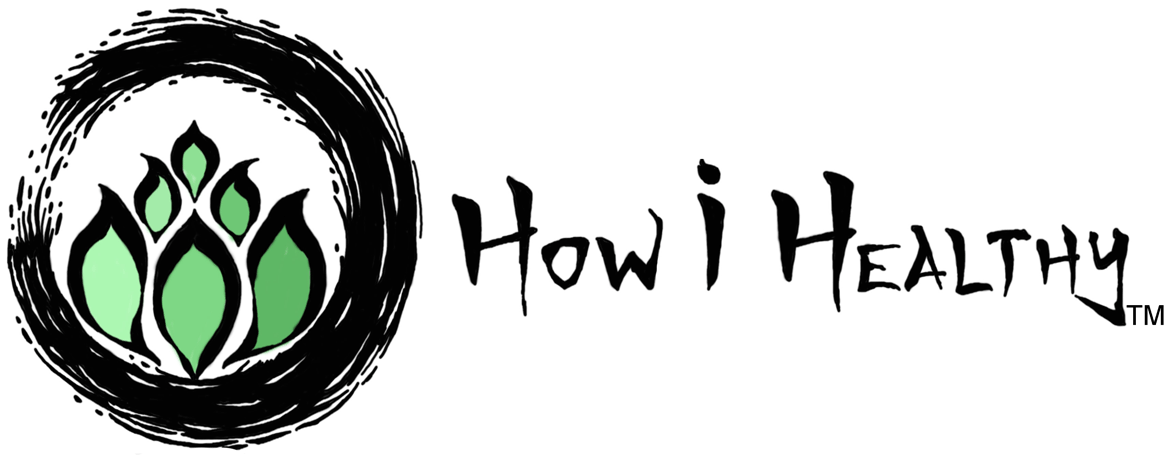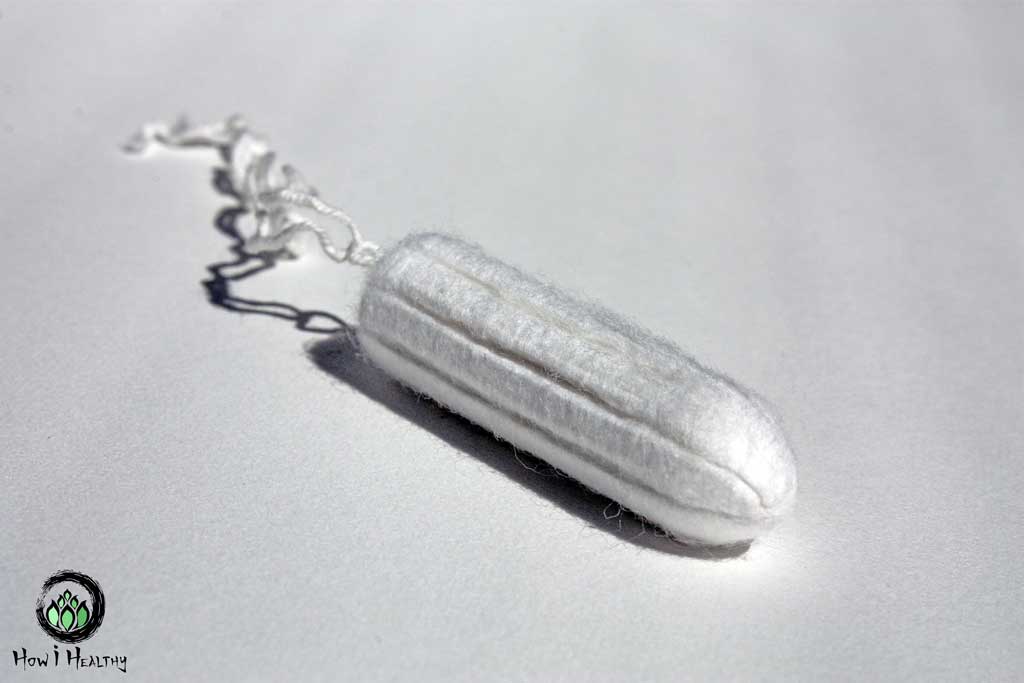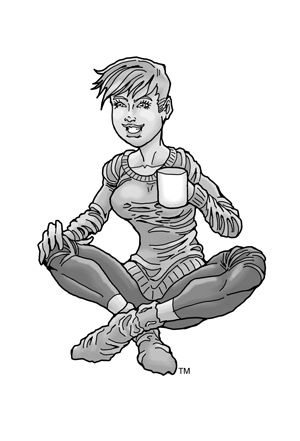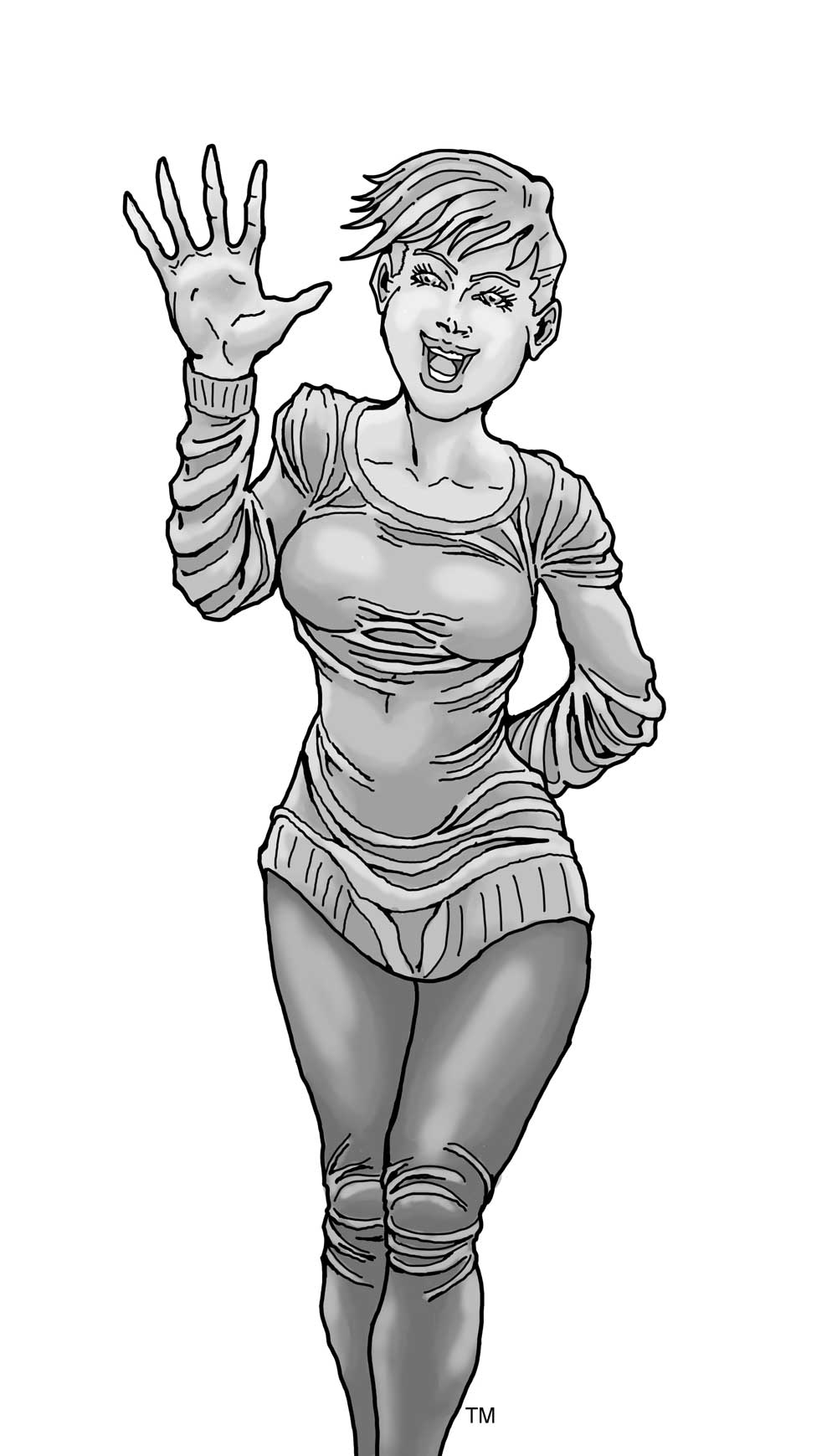In This Article, We'll Cover:
- The History of Period Care
- What’s in Today’s Period Products
- Why Organic Cotton Matters
- How i Healthy’s Favorite Organic Tampons & Pads. And why.
What goes on or in our vaginas is our own choice.
But how informed are we when making that choice?
Menstruation devices have been around for centuries. And though the modern period products seem like an improvement over ferns, paper, wool, and moss, it is not without concern.
Chemical additives can lurk in pads, tampons, panty liners, and period underwear.
Plus, plastic parts don’t bio-degrade.
And then there are companies perpetuating negative period messaging, period shaming, and period genderizing.
Let’s dive into some history, concerns, and what you can do about it.
Period Products: A History
There are few historic accounts or surviving artifacts of early period products.
Early peoples were rocking compostable periods long before we were.
Historians have found evidence that wool, moss, paper, linen, and grass functioned as external sponges most similar in concept to a pad. (18)
The early 20th-century brought menstrual belts that allowed for better range of motion, and the first generation of menstrual cups. (48)
Then enter tampons.
Etymology
French: tapon or tampion, meaning “plug”, “stopper”, or “to fill a hole”.
Tampion were covers or plugs used in gun muzzles and pipe organs.
I got really excited about this: “Tamp it down” derives from tapon!
(21, 26, 27)
Tampons as menstrual devices are relatively new. Historically, tampons were used to stop bleeding in deep wounds, (like bullet holes), and as a device to deliver medicines, including contraceptives, into the vagina. (18)
Most early accounts of inserted devices were medical and did not mention “menstruation” specifically. But one account does state absorption of “vaginal and uterine discharges”. (18)
In 1879, a “vaginal tampon-tube” appeared in the British Medical Journal. Several clumps of cottonwool strung together and saturated with glycerin (yikes!) were inserted into the vagina with a glass speculum and wooden rod. It is not clear how popular this method was, or if someone could insert the tampon independently. (18)
Not until the 1930’s did tampons as we know them enter the commercial market. And even then, stigma against people touching their vaginas or labia slowed sales. Opponents feared tampon users would experience sexual pleasure and lose their virginity with inserted tampons.
WWII increased tampon sales as more people who used them entered the workforce. (18)
With more women working, period product demand increased. And as with demand comes advertising.
Early advertising used period shaming to boost sales. Advertisements perpetuated negative stigmas about periods, and often used imagery featuring men leaving their wives over poor period ‘hygiene’. (18, 49)
Then fragrance and perfume periods products hit the markets. And the advertisements claiming periods have an odor and needs to be masked for fear of social ostracism came not soon after. (50, 51, 52)
In the social revolutions of the 60s & 70s more folks fought against the stigma that periods smelled or were unsanitary. Despite this, fragrance period products use grew, as did allergy-related reactions to those fragrances. (18)
Synthetic materials replaced cotton in the 70s for many period products. And tampons were categorized as “medical devices”, instead of “cosmetic”, by the Food and Drug Administration (FDA). This meant that tampon manufactures do not have to disclose ingredients used. A decision that affects us even today. (18)
To this day, manufactures still use synthetic fibers, fragrances, and a whole host of other things vaginas don’t need.
Problems with Period Products
Tampons, pads, and liners are “medical devices” according to the Food and Drug Administration (FDA). Tampon companies are not required to disclose their ingredients (1). This opens the doors to potential problems.
Through third party testing, period products were found to contain chemicals like:
- 1,4-Dioxane from bleaching wood pulp
- Acetone
- Antibacterial triclosan
- Carbon Disulfide
- Chloroform
- Fragrance
- Parabens
- Pesticides
- PFAS forever chemicals
- Phthalates
- Volatile Organic Compounds (VOCs) including Toluene, Styrene, Benzene, &
(2, 3, 4, 8)
That’s a concerning list that links to cancer, reproductive harm, & neurotoxins.
Let’s dive into a few of these:
Carbon Disulfide
Carbon Disulfide is a chemical used in the production of viscose rayon, a blended mix of cellulose wood pulp fiber (rayon) and cotton. Rayon is highly absorbent. Carbon disulfide exposure in rayon chemical plants increased the risk of menstrual disorders, early menopause, cardiovascular disease, and hormonal disturbances. (5, 6)
Viscose rayon can increase menstrual proteins and increase Staphylococcus aureus, a bacteria found in the vagina. This reaction is associated with an increased risk of Toxic Shock Syndrome (TSS). (4,7)
Fragrance
Found in scented period products.
That ‘fragrance’ is considered a trade secrete by the FDA and does not require disclosure. Unfortunately, trade secret fragrances are often full of parabens and phthalates. (41, 45)
The International Fragrance Association has a master list of “fragrance” chemicals. Not surprising it includes carcinogens, irritants, allergens, and potential endocrine disruptors. (45)
These chemicals can pass through the skin and into our bodies and are linked to decreased fertility and birth defects. (42, 43, 44)
Pesticides from Non-Organic Cotton
Tampon testing revealed residual pesticides. Including, Malaoxon & Malathion, Dichlofluanid, Mecarbam, Procymidone, Methidathion, Fensulfothion, Pyrethrum, and Piperonyl Butoxide. (2, 3)
The EPA states:
- Procymidone as a “probable human carcinogen”
- Piperonyl butoxide as a “possible human carcinogen”
- Malathion as “suggestive of carcinogenicity”
(9)
These chemicals, combined with highly permeable body tissue, might increase risk of exposure through absorption. (4)
Besides the potential bodily harm, pesticides aren’t good for our Earth either. Pesticides are regarded as biohazards that disrupt environmental equilibrium, kill pollinators, and don’t biodegrade. (29, 31, 31, 32)
Organic tampons & pads are products produced with the Earth in mind. Even if non-organic tampons pose minimal health hazards to the body, I wouldn’t use them because of the hazards they pose to the environment.
PFAS
PFAS or perfluorinated chemicals are used in stain & water resistance fabrics. This includes sweat-wicking fabrics too.
PFAS can be found in synthetic fabrics like: yoga pants, sports bras, & rain/ski coats.
In the case of period products, PFAS can be found in period underwear, tampons, and pads. (37, 38, 39)
What’s so bad about that?
Well, PFAS link to genotoxicity, DNA fragmentation, endocrine disruption, reduced fecundity, infertility, kidney disorders, thyroid & hormone disruption, and metabolic dysfunction. Several studies have noted the PFAs might link to several types of cancer. This health concerns impact humans and animal species alike. (32, 33, 34, 35, 36)
Undisclosed PFAS in period underwear led to a class-action lawsuit against Thinx® Period Underwear. (40)
Plastics
Beyond the plastic packaging of period products and plastic applicators, period products themselves contain plastic.
That plastic, especially in the case of tampons, is inserted directly into the vagina for weeks every year, for several decades. (54)
Compound that vagina-plastic contact with the fact that many tampons shed microplastics, according to a study. (54)
Microplastic shedding tampons.
Yep.
Microplastics in the vagina.
(54)
What’s worse?
The study found the 12 of 24 tampons tested also shed nanoplastics into water systems. Up to 17 billion nanoplastics per tampon. (54)
The study concludes that the health implications of microplastics in the vagina are unknown. (54)
But, if it’s anything like other microplastics in the body, then it can’t be good.
VOCs
VOCs, or Volatile Organic Compounds, comprise of many chemicals.
For tampons, pads, & panty liners, over 200 different kinds of VOCs have been detected in studies. (47)
VOCs are used in fragrances, adsorbents, moisture barriers, adhesives, and binders for period products. (47)
VOCs are linked to reproductive harm and cancer. They can be inhaled, ingested, or in the case of period products, absorbed through the skin. And again, through the vagina specifically, a highly permeable part of the body. (47, 48)
Although the VOCs present in most period products are generally low, the long-term exposure to these low-dose VOCs is poorly understood. One study looked at this issue specially and concluded that some pads pose health risks, but more testing is needed to fully understand the risks of long-term low VOC exposure to vaginas. (47)
My Favorite Organic Tampons
Although most convectional period products don’t have body or Earth in mind, there are a few that do!
Choosing cleaner products can help prevent exposure for the decades we might use these products.
So, where to start? Organic tampons, pads, or liners!
Every person is different. Maybe a pad a day or maybe five. Maybe a period lasts three days or maybe seven.
Maybe someone uses a panty liner for bladder leakage.
Maybe pads aren’t your thing, but tampons are.
Perhaps someone is postpartum or had a surgery and only uses these products temporarily.
However the flow goes, tampons, pads and liners spend time with our bodies. And when we are done with them, they impact the Earth.
Before we dive into my favorite brand, what standard did it measure up to?
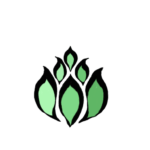
The How i Healthy Standard
Our favorite products/brands meet as many of these conditions as possible.
Healthy body, healthy planet, & healthy sex means:
- Align with My Best Sustainability & Ethical Tips
- As Local as Possible
- Cruelty-Free
- Doesn’t Contain these Harmful Chemicals
- Environmental and/or Socially Responsible Company
- Ethically Made: Fair Trade, Living Wages, Safe Worker Conditions
- Gender-inclusive
- No Greenwashing Scams
- Organic & Sustainably Harvested Ingredients
- Pass How i Healthy’s Counterfeit Vetting Process
- Purchased Through/From an Ethical Shop/Marketplace.
- Zero Waste / Plastic & Bioplastic-free / Home Compostable
- 1% for the Planet®, B Corporation®, Green American Business®, or similar credentials
We are in luck. There is an ethical company making chemical-free, plastic-free and organic tampons, pads, & liners possible!
Bonus? They are actively pushing for legislature to clean up period products for all.
Natracare® Organic Tampons
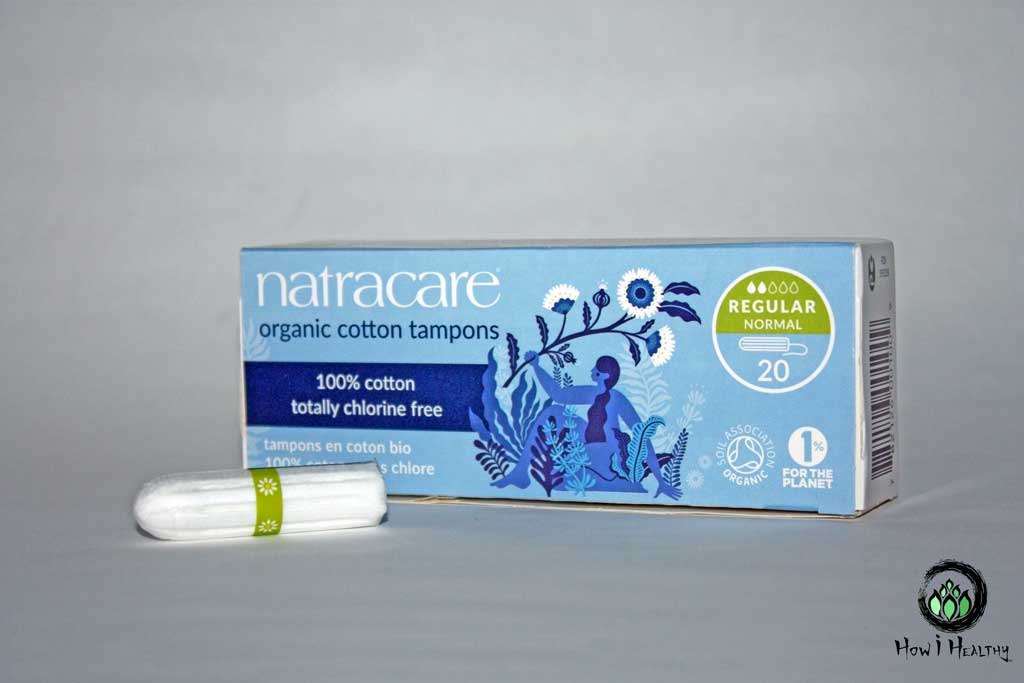
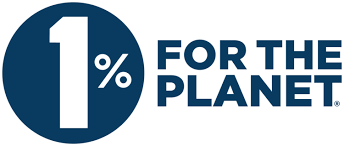
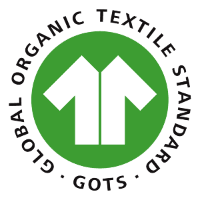
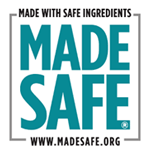
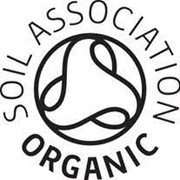
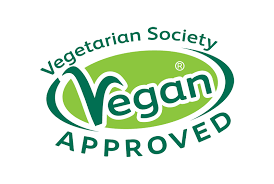
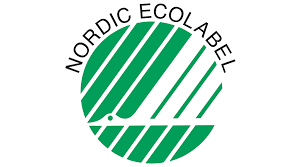
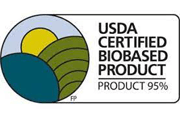
Product Kudos
Origin: Organic cotton from Kyrgyzstan & Peru. Sustainably sourced wood pulp from Scandinavia. (22, 24)
End of Life: Home compostable organic tampons, pads, liners, and bio-based films, recycle cardboard tampon box.
Ingredients/Packaging:
- Pads: Chlorine-free PEFC certified sustainable wood pulp, GMO-free bio-based starch, Chlorine-free 100% GOTS® organic cotton. (53)
- Panty Liners: Chlorine-free PEFC certified sustainable wood pulp, GMO-free bio-based starch, Chlorine-free 100% GOTS® organic cotton. (53)
- Tampons: Chlorine-free 100% GOTS® organic cotton tampons wrapped in BPA-free recycled plastic*(applicator free only). Home compostable tampon & applicator. Recycled cardboard box. (24)
Why It’s Awesome:
- An excellent option for folks preferring disposable period products.
- Home compostable periods!
- No additives, plastics, chemicals, chlorine, synthetic fibers, rayon, pesticides, phthalates, dioxins, dyes, or perfumes. (24)
- Organic tampons, pads, & liners! Yay!
- Wide range of product options and absorbencies.
- Works. Leek proof and comfortable.
Company Kudos
- 100/100 score from The Ethical Company Organization. (16)
- As a member of the1% for the Planet®, Natracare® donates 1% of total turnover, not just profit, to environmental and social organizations around the world. (16)
- Constantly strives to eliminate plastics from their products. Applicators are compostable cardboard. Pads and liners use a bio-based plastic made from renewable sources, not petroleum, and are compostable. I hope someday they’ll find an alternative to plastic wrapped non-applicator tampons.
- Gender-inclusive and no period shamming language. No “feminine hygiene sanitary products” (ug, I can’t even write it out without feeling uncomfortable).
- They don’t perpetuate the stigma that periods are “unsanitary” or exclusive to woman. Check out their petition calling on stores to remove assumptive and shaming language from the period products aisle. (23)
- A woman owned business making organic & compostable periods products since 1989. (25)
What About The Reusable Products Out There?
That’s a great question!
Reusable period products are booming!
With washable pads and menstrual cups there are many options.
But I have not tried them, I’m still choosing compostable periods at the moment. I can’t recommend anything specific.
But, if I did have any recommendations I’d say:
Choose unbleached 100% certified organic cotton reusables that are free from chemical treatments and any synthetic fibers/fabrics.
Avoid period underwear made from synthetic fibers due to PFAS risk. Just see the Thinx® class-action lawsuit.
As for menstrual cups, I know people who love them and people who don’t. But I’ve never tried those either.
Perhaps it is unfounded, but medical grade silicone concerns me.
If you’ve read the Sustainable Sex Toy Guide then you know I am skeptical of anything going into my vagina. Plus, there’s the risk of purchasing a Counterfeit Product. And the concerning fact that the cup is used internally for days.
I didn’t find any data confirming my fears about internal, long-term use of silicone menstrual cups.
Most studies I did find tested silicone sex toys. A product with very different regulations, use, and oversight.
But I found a journal review published in The Lancet that concluded menstrual cups are “a safe option”. The review also stated that more “good quality studies in this field are needed”. (17)
I agree with that statement, there aren’t many studies, I looked!
The review did note that menstrual cups caused no vaginal bacteria disruption. Yay for vaginal flora! But cups could cause pain, irritation, and dislodgement of intrauterine devices (IUDs) in a small percentage of participants. (17)
With all that said, I’m just not interested in menstrual cups. Plenty of people prefer them to other options, and that’s wonderful.
Want more options?
Earth Hero® has many Period Products to choose from.
It’s a personal choice for each of us to make, and it’s awesome to have so many options to choose from.
The Takeaway Message
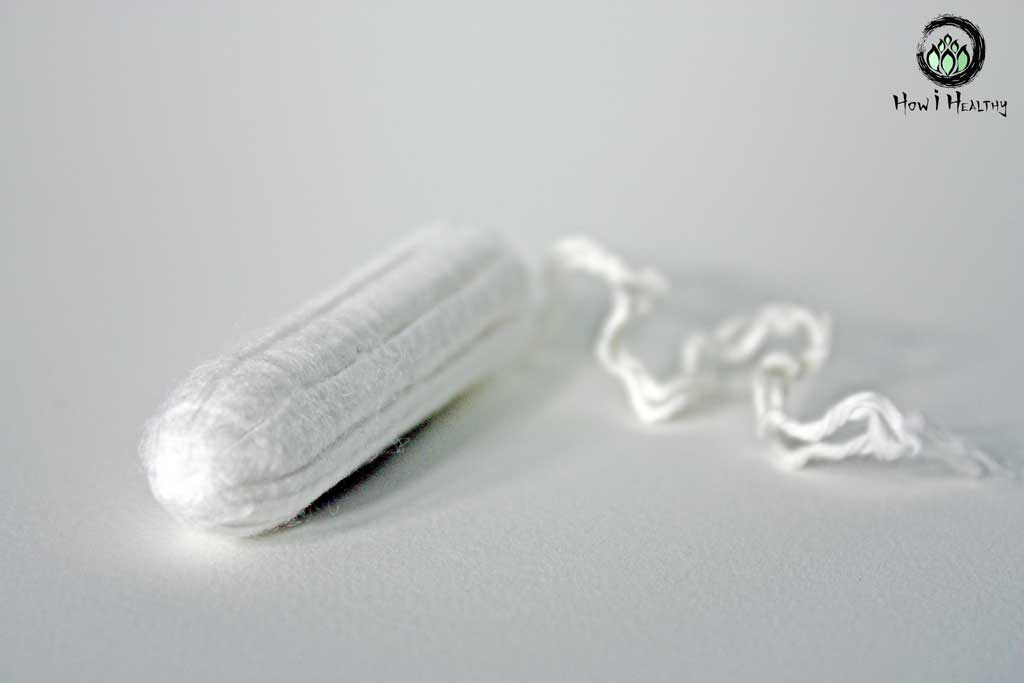
Tampons, pads, and panty liners often contain undisclosed chemicals that might cause menstrual disorders, early menopause, hormonal disturbances, or cancer. (1, 2, 3, 4, 5, 6)
Plus, these chemicals disrupt ecosystems, kill pollinators and don’t biodegrade. (29, 31, 31, 32)
Synthetic tampons and other period products shed microplastics in the vagina, landfills, and environment. (54)
Organic tampons & pads made from cotton pose less hazards to both body and planet. (2, 3)
Organic tampons made from 100% cotton also means compostable periods. And with bio-based starch, pads can be compostable too!
And when it comes to organic compostable period products, there is only one company putting people & planet before profit: NatraCare®
A 1% for the Planet® member, and woman-owned business. They are changing the way people care for periods.
A plastic-free, home compostable, organic, & chemical-free way.
It’s period care that pays farm workers living wages, advertises without period shaming, is gender-inclusive, and pushes for safer period standards in legislature.
See their awesome products:
Compostable periods are possible, comfortable, ethical, microplastic-free thanks to Nataracare® organic tampons & pads made from organic cotton.
That’s How i Healthy!
-Artemis
- Center for Devices and Radiological Health. “Menstrual Tampons and Pads: Information for Premarket Guidance.” S. Food and Drug Administration, FDA, 2005, www.fda.gov/regulatory-information/search-fda-guidance-documents/menstrual-tampons-and-pads-information-premarket-notification-submissions-510ks-guidance-industry
- “What’s in Your Tampon?” Women’s Voices for the Earth, 2018, womensvoices.org/menstrual-care-products/whats-in-your-tampon/
- “New Tampon Testing Reveals Undisclosed Carcinogens and Reproductive Toxins.” Women’s Voices for the Earth, 5 June 2018, womensvoices.org/2018/06/05/new-tampon-testing-reveals-undisclosed-carcinogens-and-reproductive-toxins/
- Nicole, Wendee. “A Question for Women’s Health: Chemicals in Feminine Hygiene Products and Personal Lubricants.” Environmental Health Perspectives, National Institute of Environmental Health Sciences, Mar. 2014, ncbi.nlm.nih.gov/pmc/articles/PMC3948026/
- Sieja, Krzysztof, et al. “Health Effect of Chronic Exposure to Carbon Disulfide (C2) on Women Employed in Viscose Industry.” Medycyna Pracy, U.S. National Library of Medicine, 22 May 2018, ncbi.nlm.nih.gov/pubmed/29171550
- Gallagher, Lisa G, et al. “Occupational Exposures and Mortality from Cardiovascular Disease among Women Textile Workers in Shanghai, China.” American Journal of Industrial Medicine, U.S. National Library of Medicine, Nov. 2012, ncbi.nlm.nih.gov/pmc/articles/PMC3515077/
- Tierno, P M, et al. “Effects of Toxic Shock Syndrome Staphylococcus Aureus, Endotoxin and Tampons in a Mouse Model.” Clinical and Investigative Medicine. Médecine Clinique Et Experimentale, U.S. National Library of Medicine, Mar. 1987, ncbi.nlm.nih.gov/pubmed/3581548
- DeVito, Michael J, and Arnold Schecter. “Exposure Assessment to Dioxins from the Use of Tampons and Diapers.” Environmental Health Perspectives, U.S. National Library of Medicine, Jan. 2002, ncbi.nlm.nih.gov/pmc/articles/PMC1240689/
- “U.S. Environmental Protection Agency Office of Pesticide Programs.” Chemicals Evaluated for Carcinogenic , 2018, http://npic.orst.edu/chemicals_evaluated.pdf
- Center for Food Safety and Applied Nutrition. “Fragrances in Cosmetics.” S. Food and Drug Administration, FDA, 2020, www.fda.gov/cosmetics/cosmetic-ingredients/fragrances-cosmetics#labeling
- Marsman, Daniel S.. “NTP Technical Report on Toxicity Studies of Dibutyl Phthalate”. United States Department of Health and Human Services. Public Health Service. National Institutes of Health. https://ntp.niehs.nih.gov/sites/default/files/ntp/htdocs/st_rpts/tox030.pdf
- California Office of Enviromental Health Hazard Assessement. The Proposition 65 List. https://oehha.ca.gov/proposition-65/proposition-65-list
- “Potential Health Effects of Toxic Chemicals in Feminine Care Products.” Woman’s Voices for the Earth, 2013, womensvoices.org/wp-content/uploads/2013/11/Chem-Fatale-Report.pdf
- Martino, Jenny L, and Sten H Vermund. “Vaginal Douching: Evidence for Risks or Benefits to Women’s Health.” Epidemiologic Reviews, U.S. National Library of Medicine, 2002, ncbi.nlm.nih.gov/pmc/articles/PMC2567125/
- “Awards and Certifications.” Natracare, www.natracare.com/why-natracare/awards-certifications/.
- Van Eijk, Anna Maria et al. “Menstrual cup use, leakage, acceptability, safety, and availability: a systematic review and meta-analysis.” The Lancet. Public health 4,8 (2019): e376-e393. doi:10.1016/S2468-2667(19)30111-2. https://www.thelancet.com/journals/lanpub/article/PIIS2468-2667(19)30111-2/fulltext
- Fetters, Ashley. “The Tampon: A History.” The Atlantic, Atlantic Media Company, 1 June 2015, theatlantic.com/health/archive/2015/06/history-of-the-tampon/394334/
- DICKINSON RL. TAMPONS AS MENSTRUAL GUARDS. 1945;128(7):490–494. doi:10.1001/jama.1945.02860240016004. https://jamanetwork.com/journals/jama/article-abstract/274542
- Tierno, Philip M., and Bruce A. Hanna. “Ecology of Toxic Shock Syndrome: Amplification of Toxic Shock Syndrome Toxin 1 by Materials of Medical Interest.” Clinical Infectious Diseases, vol. 11, no. Supplement_1, 1989, doi:10.1093/clinids/11.supplement_1.s182. https://academic.oup.com/cid/article-abstract/11/Supplement_1/S182/306433?redirectedFrom=fulltext&login=false
- “Tampon.” Merriam-Webster, Merriam-Webster, www.merriam-webster.com/dictionary/tampon.
- “5 Very Good Questions (and Answers) About Organic Cotton.” Natracare, 21 Jan. 2021, www.natracare.com/blog/5-questions-answers-about-organic-cotton/.
- “Why Conversations About Periods Need To Be Intersectional.” Natracare, 10 Mar. 2021, www.natracare.com/blog/why-conversations-about-periods-need-to-be-intersectional/.
- “Choosing Natracare Pads, Tampons and Wipes: Your Intimate Health.” Natracare, www.natracare.com/why-natracare/intimate-health/.
- “Our Story.” Natracare, www.natracare.com/our-story/.
- “Tampion.” Merriam-Webster, Merriam-Webster, Tampion | Definition of Tampion by Merriam-Webster
- “Tamp.” Merriam-Webster, Merriam-Webster, Tamp| Definition of Tamp by Merriam-Webster
- Comnea-Stancu, Ionela Raluca et al. “On the Identification of Rayon/Viscose as a Major Fraction of Microplastics in the Marine Environment: Discrimination between Natural and Manmade Cellulosic Fibers Using Fourier Transform Infrared Spectroscopy.” Applied spectroscopy 71,5 (2017): 939-950. doi:10.1177/0003702816660725. https://journals.sagepub.com/doi/10.1177/0003702816660725
- Pettis, Jeffery S et al. “Crop pollination exposes honey bees to pesticides which alters their susceptibility to the gut pathogen Nosema ceranae.” PloS one 8,7 e70182. 24 Jul. 2013, doi:10.1371/journal.pone.0070182. https://journals.plos.org/plosone/article?id=10.1371/journal.pone.0070182
- Goulson, Dave et al. “Rapid rise in toxic load for bees revealed by analysis of pesticide use in Great Britain.” PeerJ 6 e5255. 19 Jul. 2018, doi:10.7717/peerj.5255. https://pubmed.ncbi.nlm.nih.gov/30038870/
- Aktar, Md Wasim et al. “Impact of pesticides use in agriculture: their benefits and hazards.” Interdisciplinary toxicology 2,1 (2009): 1-12. doi:10.2478/v10102-009-0001-7. https://pubmed.ncbi.nlm.nih.gov/21217838/
- Sharma, Akanksha et al. “Global trends in pesticides: A looming threat and viable alternatives.” Ecotoxicology and environmental safety 201 (2020): 110812. doi:10.1016/j.ecoenv.2020.110812. https://pubmed.ncbi.nlm.nih.gov/32512419/
- Liu, Changhui, et al. “Genotoxicity of Perfluorinated Chemicals (PFCs) to the Green Mussel (Perna Viridis).” The Science of the Total Environment, U.S. National Library of Medicine, 15 July 2014, ncbi.nlm.nih.gov/pubmed/24784736
- Sonthithai, Pacharapan, et al. “Perfluorinated Chemicals, PFOS and PFOA, Enhance the Estrogenic Effects of 17β-Estradiol in T47D Human Breast Cancer Cells.” Journal of Applied Toxicology : JAT, U.S. National Library of Medicine, June 2016, ncbi.nlm.nih.gov/pubmed/26234195
- Vélez, M P, et al. “Maternal Exposure to Perfluorinated Chemicals and Reduced Fecundity: the MIREC Study.” Human Reproduction (Oxford, England), Oxford University Press, Mar. 2015, ncbi.nlm.nih.gov/pubmed/25567616
- Panieri, Emiliano et al. “PFAS Molecules: A Major Concern for the Human Health and the Environment.” Toxics 10,2 44. 18 Jan. 2022, doi:10.3390/toxics10020044. https://pubmed.ncbi.nlm.nih.gov/35202231/
- Bonato, Marco et al. “PFAS Environmental Pollution and Antioxidant Responses: An Overview of the Impact on Human Field.” International journal of environmental research and public health 17,21 8020. 30 Oct. 2020, doi:10.3390/ijerph17218020. https://www.ncbi.nlm.nih.gov/pmc/articles/PMC7663035/
- “Pfas in Menstrual Products.” Women’s Voices for the Earth, 2023, https://womensvoices.org/2023/04/24/pfas-in-menstrual-products/
- Staff, EHN. “Evidence of Pfas Found in Tampons – Including Organic Brands.” Environmental Health News, 31 Oct. 2022, ehn.org/pfas-tampons-2658510849.html
- Staff, EHN. “Evidence of PFAS in Sanitary and Incontinence Pads.” Environmental Health News, 22 Jan. 2023, www.ehn.org/pfas-sanitary-pads-2658810347.html.
- Treisman, Rachel. “Thinx Settled a Lawsuit over Chemicals in Its Period Underwear. Here’s What to Know.” NPR, 19 Jan. 2023, www.npr.org/2023/01/19/1150023002/thinx-period-underwear-lawsuit-settlement.
- Center for Food Safety and Applied Nutrition. “Fragrances in Cosmetics.” S. Food and Drug Administration, FDA, 2020, www.fda.gov/cosmetics/cosmetic-ingredients/fragrances-cosmetics#labeling
- Marsman, Daniel. “NTP Technical Report on Toxicity Studies.” Dibutyl Phthalate (CAS No. 84-74-2) , National Toxicology Program, United States Department of Health and Human Services Public Health Service National Institutes of Health, 1995, https://ntp.niehs.nih.gov/sites/default/files/ntp/htdocs/st_rpts/tox030.pdf
- “The Proposition 65 List.” ca.gov, California Office of Environmental Health Hazard Assessment, 2020, https://oehha.ca.gov/proposition-65/proposition-65-list
- “Potential Health Effects of Toxic Chemicals in Feminine Care Products.” Women’s Voices for the Earth, 2013, womensvoices.org/wp-content/uploads/2013/11/Chem-Fatale-Report.pdf
- IFRA Transparency List, https://ifrafragrance.org/priorities/ingredients/ifra-transparency-list
- Lin, Nan et al. “Volatile organic compounds in feminine hygiene products sold in the US market: A survey of products and health risks.” Environment international 144 (2020): 105740. doi:10.1016/j.envint.2020.105740. https://www.ncbi.nlm.nih.gov/pmc/articles/PMC7958867/
- Ding, Ning et al. “Feminine Hygiene Products and Volatile Organic Compounds in Reproductive-Aged Women Across the Menstrual Cycle: A Longitudinal Pilot Study.” Journal of women’s health (2002) 31,2 (2022): 210-218. doi:10.1089/jwh.2021.0153. https://pubmed.ncbi.nlm.nih.gov/34491105/#:~:text=Background%3A%20Volatile%20organic%20compounds%20(VOCs,to%20VOC%20exposure%20in%20women
- Mallalieu, Lee, and Mildred Coke. Catamenial Sack. 1902. https://patents.google.com/patent/US737258
- Linton, David. “Men in menstrual product advertising–1920-1949.” Women & health 46,1 (2007): 99-114. doi:10.1300/J013v46n01_07. https://pubmed.ncbi.nlm.nih.gov/18032177/
- Havens, B, and I Swenson. “Imagery associated with menstruation in advertising targeted to adolescent women.” Adolescence 23,89 (1988): 89-97. https://pubmed.ncbi.nlm.nih.gov/3381691/
- Simes, M R, and D H Berg. “Surreptitious learning: menarche and menstrual product advertisements.” Health care for women international 22,5 (2001): 455-69. doi:10.1080/073993301317094281. https://pubmed.ncbi.nlm.nih.gov/11508098/
- Coutts, L B, and D H Berg. “The portrayal of the menstruating woman in menstrual product advertisements.” Health care for women international 14,2 (1993): 179-91. doi:10.1080/07399339309516039. https://pubmed.ncbi.nlm.nih.gov/8509321/
- “Natural Materials – Pads, Wipes, Panty Liners and Tampons.” Natracare, www.natracare.com/why-natracare/natural-materials/.
- Munoz, Leonardo Pantoja, et al. “Release of Microplastic Fibres and Fragmentation to Billions of Nanoplastics from Period Products: Preliminary Assessment of Potential Health Implications.” Environmental Science: Nano, 22 Dec. 2021, pubs.rsc.org/en/content/articlelanding/2022/en/d1en00755f. https://pubs.rsc.org/en/content/articlelanding/2022/en/d1en00755f
